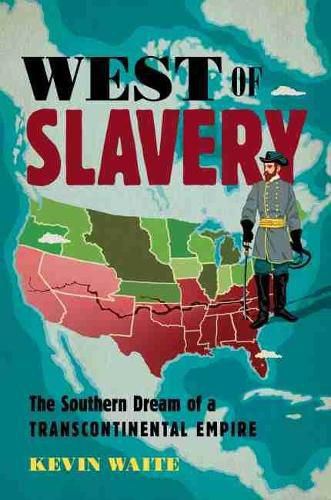Readings Newsletter
Become a Readings Member to make your shopping experience even easier.
Sign in or sign up for free!
You’re not far away from qualifying for FREE standard shipping within Australia
You’ve qualified for FREE standard shipping within Australia
The cart is loading…






When American slaveholders looked west in the mid-nineteenth century, they saw an empire unfolding before them. They pursued that vision through war, diplomacy, political patronage, and perhaps most effectively, the power of migration. By the eve of the Civil War, slaveholders and their allies had transformed the southwestern quarter of the nation–California, New Mexico, Arizona, and parts of Utah–into an appendage of the South’s plantation states. Across this vast swath of the map, white southerners extended the institution of African American chattel slavery while also defending systems of Native American bondage. This surprising history uncovers the Old South in unexpected places, far west of the cotton fields and sugar plantations that exemplify the region.
Slaveholders’ western ambitions culminated in a coast-to-coast crisis of the Union. By 1861, the rebellion in the South inspired a series of separatist movements in the Far West. Even after the collapse of the Confederacy, the threads connecting South and West held, undermining the radical promise of Reconstruction. Kevin Waite brings to light what contemporaries recognized but historians have described only in part: The struggle over slavery played out on a transcontinental stage.
$9.00 standard shipping within Australia
FREE standard shipping within Australia for orders over $100.00
Express & International shipping calculated at checkout
When American slaveholders looked west in the mid-nineteenth century, they saw an empire unfolding before them. They pursued that vision through war, diplomacy, political patronage, and perhaps most effectively, the power of migration. By the eve of the Civil War, slaveholders and their allies had transformed the southwestern quarter of the nation–California, New Mexico, Arizona, and parts of Utah–into an appendage of the South’s plantation states. Across this vast swath of the map, white southerners extended the institution of African American chattel slavery while also defending systems of Native American bondage. This surprising history uncovers the Old South in unexpected places, far west of the cotton fields and sugar plantations that exemplify the region.
Slaveholders’ western ambitions culminated in a coast-to-coast crisis of the Union. By 1861, the rebellion in the South inspired a series of separatist movements in the Far West. Even after the collapse of the Confederacy, the threads connecting South and West held, undermining the radical promise of Reconstruction. Kevin Waite brings to light what contemporaries recognized but historians have described only in part: The struggle over slavery played out on a transcontinental stage.